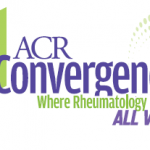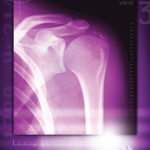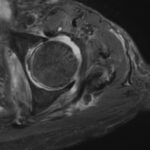New diagnostic approaches combined with new evidence about pathogenesis are providing opportunities to help rheumatologists manage calcium pyrophosphate deposition disease.


New diagnostic approaches combined with new evidence about pathogenesis are providing opportunities to help rheumatologists manage calcium pyrophosphate deposition disease.

Postmenopausal women are often told to consume more than 1,500 mg of calcium daily to reach neutral bone balance. But new research suggests this recommendation should be revised, finding no connection between dietary calcium intake and postmenopausal bone loss…
Lisa Rapaport |
(Reuters Health)—Some adults in the U.S. who use supplements to get their daily requirement of calcium are taking higher doses than necessary, a recent study suggests. Researchers examined nationally representative survey data on dietary habits and vitamin and supplement use collected between 1999 and 2014 from 42,038 adults. About one in 20 adults got a…
Lisa Rapaport |
(Reuters Health)—Older adults who take vitamin D and calcium are no less likely to break their hips or other bones than peers who don’t use these supplements, a research review suggests. Researchers examined data from 33 previous trials with a total of more than 51,000 people aged 50 or older who were living in the…

MADRID—Calcification in osteoarthritis (OA) involves a series of pathways and interactions that feed off each other in a process that bears some resemblance to the transformation of cartilage to bone that takes place in the embryonic stage of human development, a researcher said here at the 2017 Annual European Congress on Rheumatology (EULAR). “My hypothesis…
MADRID—Calcification in osteoarthritis (OA) involves a series of pathways and interactions that feed off each other in a process that bears some resemblance to the transformation of cartilage to bone that takes place in the embryonic stage of human development, a researcher said here at the 2017 Annual European Congress on Rheumatology (EULAR). “My hypothesis…

David S. Pisetsky, MD, PhD |
Editor’s note: What research on psoriatic arthritis (PsA) presented at ACR Convergence 2024 has the greatest potential for a positive impact on clinical care, treatment options or serve as the basis for future research? That’s the question The Rheumatologist asked David S. Pisetsky, MD, PhD—our founding editor—to consider. With thousands of research abstracts presented at the…

Amanda Moyer, MD, & Tamiko Katsumoto, MD |
In this case report, a patient with voriconazole-induced periostitis exhibits classic symptoms & elevated ALP levels, which quickly resolve following the discontinuation of voriconazole.

Ilana P. Goldberg, MD, & Samuel Faught, MD |
Renal osteodystrophy is associated with chronic kidney disease (CKD) and its associated metabolic derangements, most commonly CKD stages 3–5. It is often subclassified into four histological subtypes, with definite distinctions unable to be made clinically. These four subtypes, which may only be differentiated by bone biopsy, include: osteitis fibrosa cystica, mixed uremic osteodystrophy, osteomalacia and…

Rheumatologists are uniquely positioned to care for patients with sarcoidosis. Here are insights into the condition, its treatment and more.